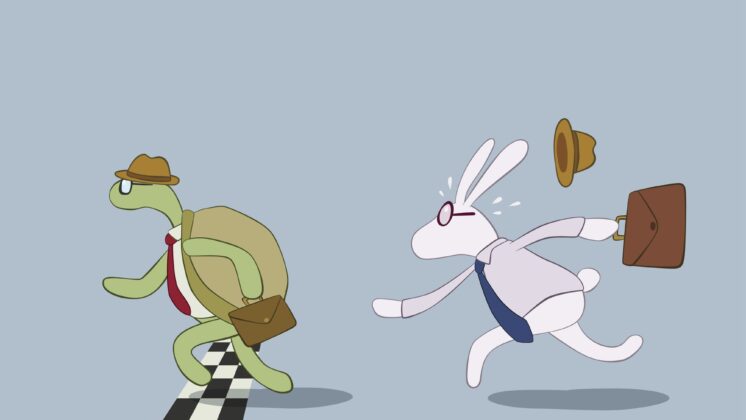Japan is famous for slow decision-making. In fact, at the Japan meeting of the World Economic Forum in 2015, Kathy Matsui, chief Japan equity strategist at Goldman Sachs, said something striking:
“People say that it takes time for the Japanese to make decisions. They’re wrong—it doesn’t take time, it takes forever!”
But she went on: “That said, once the Japanese have reached a decision, they move unbelievably fast.” And I think Ms. Matsui is right. As an example, take the concept of womenomics, the idea that Japan can dramatically boost growth by tapping into one of its most underutilized resources: women.
Matsui and her colleagues at Goldman Sachs formulated the womenomics concept in 1999…and absolutely nothing happened until 2013.
That was when Prime Minister Shinzo Abe decided to step in on the slow decision-making. He put boosting women’s workforce participation, raising women’s earning capacity, and getting more women onto company boards at the very center of his growth strategy. He reiterated his ideas at the World Assembly for Women (WAW!) in both 2014 and 2015.
Next Article
4 Characteristics + Gratitude: The Secret Recipe for Great Global Leaders
How to Solve the Problem of Gender Inequality in Japan
Japanese Decisions: Nothing Happens…Until It Does
This model of slow decision-making—where nothing happens for a long time, and then everything changes all at once—is typically Japanese. It comes from a tradition of building consensus before making decisions. It takes time (sometimes forever!) to get everyone to agree on a new policy. Once consensus has been achieved, implementation is astonishingly swift because everyone feels fully invested.
We take this sort of consensus-based approach at GLOBIS.
As the CEO, I cannot make decisions alone—even if I take an approach of slow decision-making. There needs to be consensus (or at least a majority plus the CEO) from the Executive Committee, which is made up of the CEO and nine managing directors. To get the Executive Committee on board, even I need to take time to explain why I want to do something and overcome their objections by outlining my vision, marshaling facts, and presenting my analysis. In theory, if someone on the Executive Committee cannot be persuaded about a new policy, then they can opt not to take part in its implementation. In reality, though, I am under so much pressure to make a good case that I usually manage to win everyone over.
“People say that it takes time for the Japanese to make decisions. They’re wrong: it doesn’t take time, it takes forever! That said, once the Japanese have reached a decision, they move unbelievably fast.”
Kathy Matsui, Chief Japan Equity Strategist at Goldman Sachs
Case in Point: The GLOBIS Online MBA
The introduction of the GLOBIS Online MBA provides a good example of consensus-based, slow decision-making in action. The Executive Committee voiced five objections to the initiative. Each was reasonable enough. And easy to deal with.
Technology
Could we sort out the technology? Did the right video-conferencing software exist for large-scale remote classes?
This was simple enough—yes, the right technology did exist.
Marketing
Could we get the marketing right? Would we be able to attract students to our new online offering?
Again, yes, and we had proof. Pre-marketing proved the existence of demand.
Cannibalization
Wouldn’t we be cannibalizing ourselves? Wouldn’t the online MBA simply take students away from our existing programs?
Our target would be a new demographic—people too geographically far from campus to attend our normal courses.
Quality
Could we maintain the same level of quality online? How could we apply quality control in the more dispersed arena of distance learning?
This was something we would have to promise and follow through on our own. GLOBIS has high standards for education. There was no reason (or excuse) to abandon that part of our brand simply because we were going online.
Speed
Did we really need to move so fast? Couldn’t we adopt a wait-and-see posture and learn from our competitors as they make all the first mover’s mistakes for us?
This was an important question, and the answer was no. With the competitive landscape changing so fast—the rise of MOOCs, competitors moving online—a wait-and-see approach would be far riskier than failing fast.

Slow Decisions: Frustrating, but Valuable
I addressed all the Executive Committee’s objections to the Online MBA proposal methodically and precisely. As a result, I was able to win their full support after three months, which included me personally road-testing the new system and teaching online classes. Had I been free to make the decision alone, I could have done so in three seconds. Having to spend three months winning over my colleagues in a gruelingly slow decision-making process was frustrating. However, the time we spent reaching consensus meant that when we got around to launching the Online MBA, they were all fully committed to it. That went a long way to helping the launch go quickly and smoothly.
When I can’t get a majority on the Executive Committee, I take the issue up with the board. Our board consists entirely of external directors, each with their own area of expertise, and me. The CEO cannot override a board majority decision.
In twenty-three years, the board has only rejected my proposals on two or three occasions. For example, they denied me the right to sit on the board of any of the companies in our VC portfolio. This keeps me further from the action than I like, but they were worried that if any of the startups we invested in went bankrupt in Japan, the damage could taint me (the CEO) and, through me, the whole company. It was a very Japanese perspective on things, and it was a slow decision.
Again, I wasn’t happy about it at the time. But in hindsight, I accept that they made the right decision.
People talk about life being lonely at the top for CEOs. With our system, however, I have to consult so intensively with my fellow executives that loneliness is the last thing I suffer from!
I think this typically Japanese approach of slow decision-making, for all its slowness, has two clear benefits. First, it stops egomaniacal leaders from running amok. Second, it gets strong buy-in at all levels of the organization, something that ultimately leads to better results.
So the next time you’re facing an important decision for your business (particularly one that could have long-lasting repercussions), consider the Japanese approach. Just take it slow.





